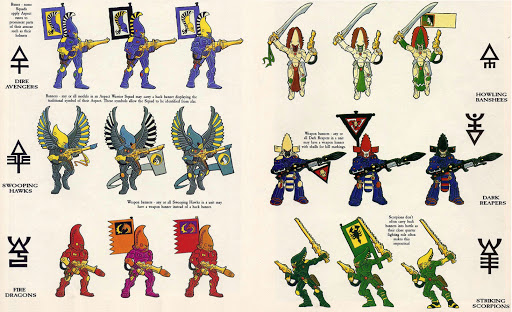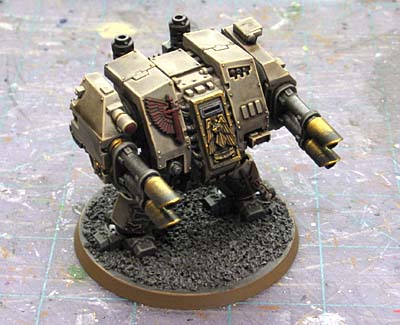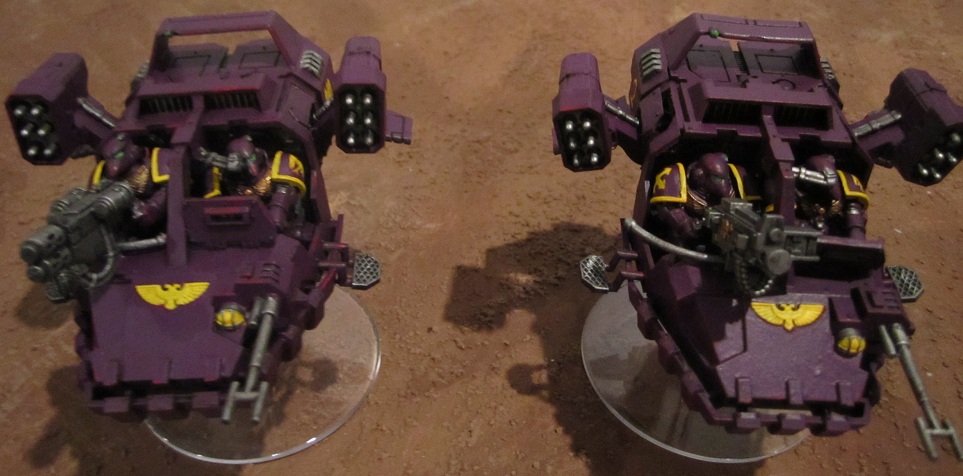40k: Redundancy – Duality and Speciality
5 Minute Read
Mar 15 2011

Advertisement
Having a unit which is awesome and amazing and can do everything you could wish of it is great. Having two is better and having three is ‘best.’ This is the core concept of redundancy so let’s take a deeper look. (picture from Ron at From the Warp)
It is everyone’s favourite pink blob again from 3++. Last article some individuals thought saturation was a big word for spam. This article they’re going to think redundancy is a big word for spam, and in the basest sense, they are correct. This time. Let’s consider the two basic types of units we need to deal with in 40k: tanks and infantry. Most guns are good at dealing with one or the other unless they have split fire modes (i.e. Railgun, missile launcher, etc.). Otherwise we generally design our units in two general modes: dual-purpose/generalists or specialists. Dual-purpose units are able to reliably deal with both mechanised and foot units. For example, a 10 man Tactical squad with combi-melta, flamer and MM in a Rhino is quite capable of killing and threatening tanks and infantry alike. This unit has duality, and can be thrown at a great variety of tasks. On the other hand, a Fire Dragon unit with no Exarch is only realistically scaring mechanised units (and of course high T targets, etc.). This is a specialist unit.
So what does this have to do with redundancy? When building your army you need to be able to identify what type of firepower each unit is bringing and what they are effective against. Having a list with good redundancy means your list has good anti-tank and anti-infantry across many units. This is where the ‘spam’ factor comes in. If you identify, and are using a good suppression unit in your army (let’s say a Dreadnought with 2x Twin-linked autocannons aka Rifleman), the easiest way to ensure redundancy is take more of that unit. Taking two of these Dreads is better than one because you’re more likely to have access to the type of firepower they put out and taking three of them is even better for the same reason. However, taking the same unit isn’t the only way to get redundancy. In the general sense of the word we’re looking for similar units in how they deal with opposing infantry and/or mech. A unit which can fulfill the same or similar firepower role therefore also provides redundancy without the need to spam the same unit (because apparently spamming is ‘bad’).
If we continue with the Rifledread example, a Typhoon speeder provides very similar abilities in terms of anti-tank. Whilst the strength is higher and the rate of fire less (and less reliable but it’s cheaper!), the mobility and effectiveness against tanks is there. We can, therefore, run Typhoons to back up our Rifledread for a number of reasons.
1) We want to spam that type of firepower (i.e. 3 Rifledreads and 3-9 Typhoons).
2) Our Elites are fully used for different functions (Sternguard, Terminators, MM/DCCW Dreads, etc.)
3) Our Elites are only partially used and we wish to support the Rifledreads we do have, etc.
By taking Typhoons to supplement our Rifledreads we are ensuring we have that type of firepower covered. If our opponent wants to remove this type of firepower from our army they have multiple units to drop and have a much harder time with target priority. If all of your units are effectively hurting the opponent’s army, there isn’t a giant “shoot me” or “ignore me” sign on most of your units. This is the key concept to redundancy and very important to good list building if balanced lists are your goal.
Let’s take a look at some very broad army examples then and compare how redundancy helps an army on the table-top. We’ll use a Space Marine army with 2 Rifledreads, 2 Typhoons and 2 Dakka Preds. They don’t all fulfill the same role but they all have multiple medium strength (S7-8) shots which have good range (48”) which are capable of being fired on the go. We’ll compare this to an Eldar list with a single squad of Fire Dragons, Warp Spiders, Dark Reapers and Howling Banshees. Each of these units has a specific role (in order) in a different phase: anti-tank (short-ranged shooting and combat), anti-infantry (short-ranged shooting), anti-MEQ (long-ranged shooting), anti-MEQ (combat).
 |
| Eldar Aspect Warriors are hard to create redundancy for as they are very specialised in what they do. |
Now let’s assume you have a mech list and are facing both the Eldar and Space Marine lists (at different times). Against the Space Marines the Predators are the lowest target priority as they aren’t really going to damage you all that reliably (unless you’re mass AV10; hi Dark Eldar) but both the Typhoons and the Rifledreads are very effective against you. You’d generally attempt to down the Typhoons first due to their weaker armor but because of their increased mobility, the can often be out of range. Even if you do suppress the Typhoons, the Dreads and Preds can still damage you unless you are able to stop them all from shooting (which is difficult).
Against the Eldar army however, target priority is much clearer. The Fire Dragons are obviously the most important target as they are clearly anti-tank whilst the other Aspects are much less likely to damage tanks due to their specialised role. Once the Fire Dragons are neutralised you can move onto the next threat to your army and effectively create such an imbalance on the board your army is very hard to take down as you’ve eliminated the key threats to your units.
Whilst this also an example of how dual-purpose units create more difficult target priorities over specialists, the key point is the lack of redundancy in the hypothetical Eldar army. If the Eldar army took more than one squad which is geared towards anti-tank (and still maintained serviceable anti-infantry), the Fire Dragons may still be a high target for mech opponents but they are also not the only anti-tank on the field. In the end this is what redundancy is about, ensuring your army can always threaten your opponent’s no matter what they shut down (barring extreme luck of course). Whether this is through repeating the same unit in the same FoC or using other units to fulfil similar yet marginally different roles is up to you and the codex your army comes from (i.e. specialist or generalist/dual-purpose base).
Both generalist and specialists units can be used effectively in the correct lists with the appropriate mindset. Whilst some books find creating redundancy with specialist units hard (i.e. Eldar who have become reduced to using very specific units to be successful), other units have access to a broad range of generalists or specialists which they can use to create redundancy with. With this in mind what are the advantages and disadvantages of generalist and specialist units in your mind everybody? How do you use generalist and specialist units?
Author: Kirby
Advertisement






